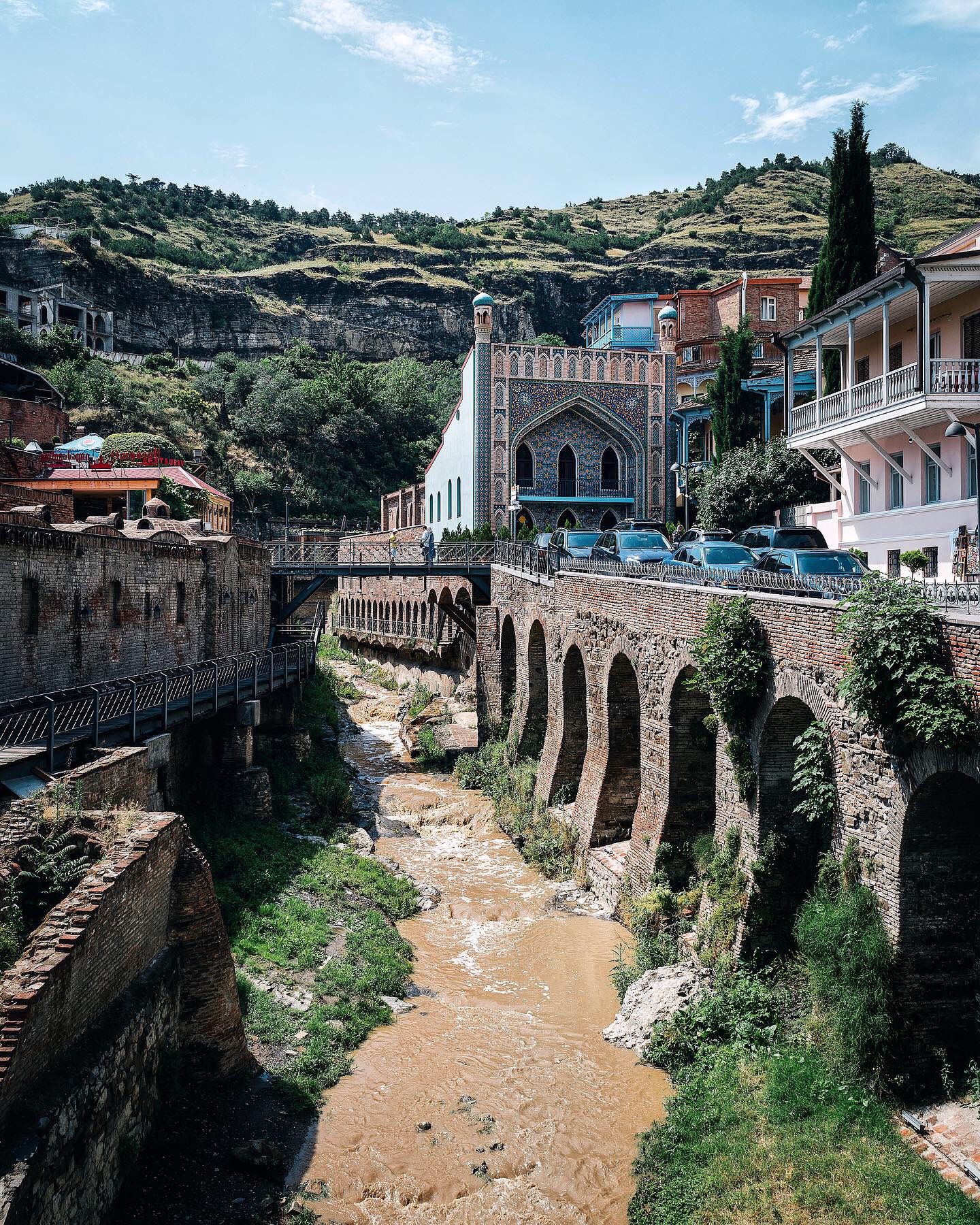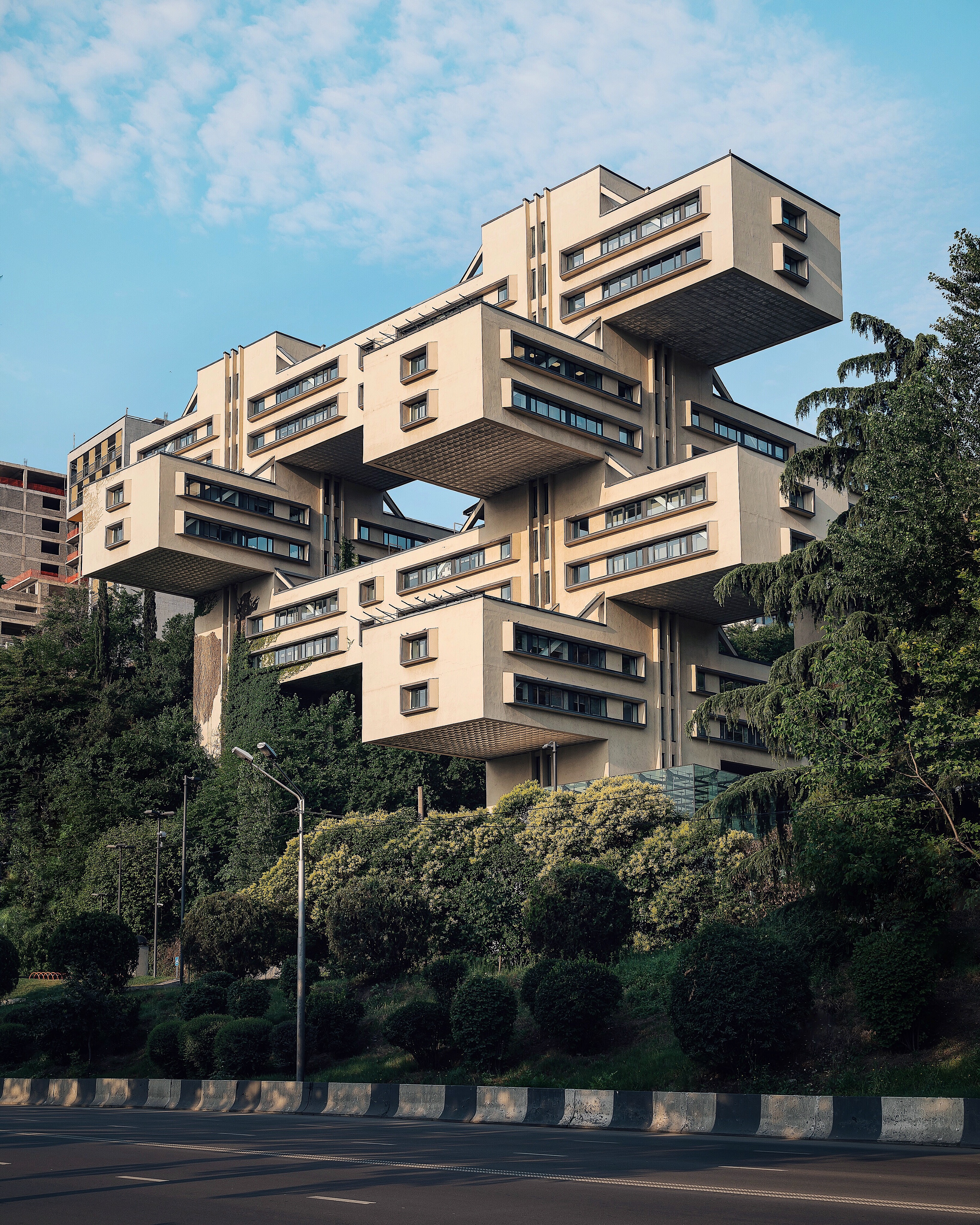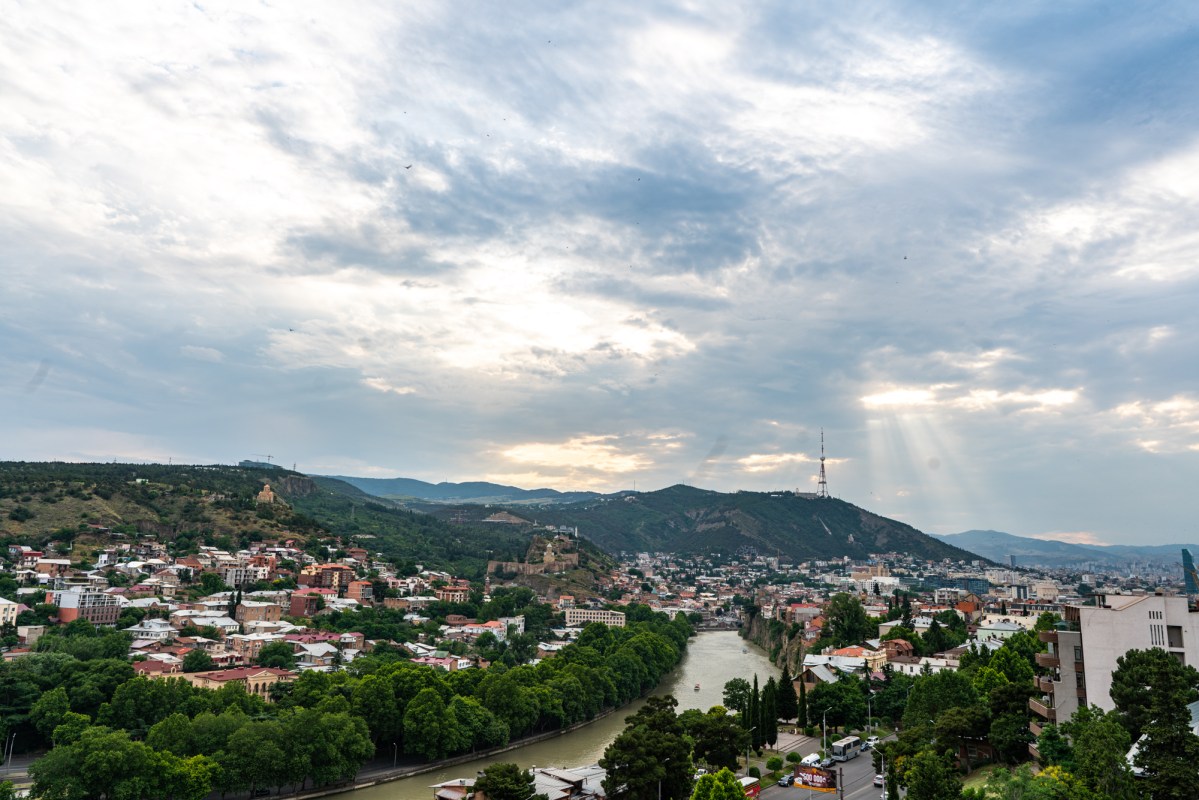Here’s a fun game I got to play for a few weeks: I told people, “I’m going to Georgia…the country.” Their eyebrows would shoot up as they adjusted their mental image from ripe peaches to…a blank, because most people aren’t totally sure where Georgia is. (If I really wanted to get a rise out of them, I went with “…to Tbilisi,” which is also just plain fun to say: ti-bi-LEE-see.)
But our collective ignorance won’t last long. The little country of four- million is gaining steam as a tourism destination for the Western world — and for good reason. With its colorful, picturesque capital, a hodgepodge of elements that’ll delight any design freak, plus stellar food, wine and nightlife, it’s poised to be for the Eurasian region what Mexico City has become: an inexpensive and vibrant destination with the infrastructure that makes visiting easy, safe and pleasant. It’s an undiscovered gem, sure, but unlike so many hard-to-reach, not-quite-ready-for-tourists corners of the earth, it’s ready for its moment in the spotlight.
And word’s already getting out. In 2017, the year Georgia went tourist-visa free, overseas visitors increased by almost 18 percent from the year before, while the number of trips by European visitors jumped by 24 percent. (Russians make up the biggest portion of their tourists, and if you’ve ever found yourself at a hotel pool near Russian travelers, you know they settle for only the best.) With rumors brewing that a direct flight from the States is imminent, now’s the time to explore — before it becomes as overrun with tourists as Reykjavik.
As my confused friends asked when I told them about my trip: Where is Georgia? It’s a surprisingly loaded question. Rarely is geography open to interpretation, but there’s disagreement over Georgians’ place on the globe: A map places the tiny country in Eastern Europe, northeast of Turkey and just a stone’s throw from Western Asia. But denizens think of themselves as Mediterranean, serving up colorful mezze platters and relaxing with good wine crushed from vineyards in the surrounding Caucasus Mountains.
The country’s a former part of the Soviet block, and its patchwork aesthetic reflects its turbulent history mostly ping-ponging between Persian and Russian rule (historically, Georgia is one of the most invaded nations on earth). Tbilisi is a beautiful hodgepodge like you’ve never seen: A maze of domed brick hammams and a mosaic-tiled mosque bring to mind nearby Turkey, while broad balconies and maze-like passages evoke old parts of southern France.
After being destroyed and rebuilt 27 times, Tbilisi is still bursting with beauty and charm. Those varied architectural influences give it an eclectic vibe—a fourth-century fortress, Soviet Modernist structures, Eastern Orthodox cathedrals and art nouveau buildings are all elbow-to-elbow within the walkable downtown. Mountains fringe the horizons, and with lush greenery clinging to cliffs, waterfalls breaking up the river downtown, citadels looming atop distant hills, and chunks of medieval walls and churches around every twisty cobblestone alley, Tbilisi has a bit of a fairytale vibe, reminiscent of Portugal.
And like Portugal, it’s got friendliness in spades; in the late ‘40s, John Steinbeck wrote in his journal, “If one tried to describe Georgia using one single word, the right word would definitely be ‘hospitality.’” In fact, there’s an old Georgian saying you’ll hear over and over when you visit the country: Guests are from God. Any visiting stranger, the logic goes, could be Jesus himself, so you better treat them kindly. (Whether this blanket openness is related to those 27 conquerings, I can’t say.)
I stayed at the just-opened Sheraton Grand Tbilisi Metechi Palace, a chic hilltop spot with an excellent spa and outdoor pool, plus sweeping views of the city below. It made an ideal home base as I explored the downtown, with stops at the walled Old Town and surrounding neighborhoods.

You can’t miss the sulphur baths clustered in Abanotubani, Tbilisi’s ancient sulphur bathhouse district, including the brown-bricked igloos of the Royal Bath House (which brought to mind a Star Wars settlement) and the blue-tiled Orbeliani Baths. (You’ll smell them before you see them—the water’s rotten-egg odor is one your nose never gets used to.) Book a private room (including a sauna, hot tub, cold plunge pool and shower) and don’t be alarmed with a therapist arrives to loofah you down and bathe you like a baby atop a marble slab.
For a city predicated on hospitality, Tbilisi doesn’t always make its eating and drinking establishments easy to find. To find the delicious Keto and Kote, which serves up Georgian specialties like nigvziani badrijani (fried, rolled eggplant stuffed with nuts and garlic), pkhali (sort of a vegetable pesto rolled into a ball) and khachapuri (cheese-filled bread) amid sweeping hillside views, you’ll have to pass through what looks like a dead-end alley and pop out through the restaurant’s jasmine-scented garden. To get to Shavi Lomi (which means Black Lion), a leafy eatery strewn across the inside yard of a traditional Tbilisian house, push open a hard-to-spot door in the middle of street art painted on a tall gate.
Georgian food is shockingly good, nothing like the meat and potatoes I was expecting. At nearly every meal, we dug into endless platters of colorful, vegetable-based dishes with an embarrassment of cheese: chunks of cheese, a flower-shaped snack with hard cheese on the outside and soft cheese piped inside, pinwheel-like roll-ups with herbs and cheese rolled up inside harder cheese and topped in (you guessed it) cheese, and, my personal favorite, a hot cheese-corn mash (much like the inside of a tamale), served with hard cheese for dipping. The lactose intolerant or vegan will still have plenty to choose from, but they’re missing out.
And be prepared for wine — always wine. Georgians say their nation gave birth to viniculture 8,000 years ago, and if my visit was any indication, they haven’t stopped sipping since. Georgian whites tend to be vibrant and acidic, while the reds are fragrant and peppery. Piquant orange wines often make an appearance, and locals are quick to offer their piquant qvevri wine, a traditional orange wine fermented in huge earthenware pots.
They’re equally proud of a wine-adjacent liquor called chacha, which shows up in fancy cocktails (for example, one mixology bar served it with lillet blanc, lime cordial, and violet in a coupe cocktail called “flying painter”) and on its own in small glasses, ready to be raised in a toast. It’s a clear grape brandy, and I thought it tasted like grain alcohol, but my friends loved it. Enough to name our Whatsapp group “Chacha Real Smooth,” so I owe it a little credit.
Drinking establishments can be as off-the-beaten-track as restaurants. We wandered into a stranger’s yard before finally finding the entrance to 41 Gradus, a hip craft cocktail spot that would look right at home in Brooklyn but features rotating drink specials that spotlight local ingredients, such as tkemali, a sauce made from a tangy green plum. Likewise, Woland’s Speakeasy, a sprawling underground labyrinth with great drink specials and late-night karaoke, has one entrance: through a trick bookshelf at the back of an American-style diner. (Granted, a sign hangs at the entrance pointing passersby into Woland’s Speakeasy. Which begs the question: Is speakeasy signage an oxymoron?)

Other must-see’s are harder to miss. Follow the sound of rushing water to Leghvtakhevi Waterfall hidden away in the middle of downtown Tbilisi, and ride the funicular up a nearby hill for panoramic views of the city. Book a ferry ride on the Mtkvari River for a float past medieval forts and ultra-modern architecture, like the bow-shaped steel-and-glass Bridge of Peace, the mirrored, cylindrical Music Hall designed by Massimiliano Fuksas, and the House of Justice, a hulking building with wide, white, sloped awnings that earned it the nickname “the mushroom building.”
I fell in love with Tbilisi — and the clout that came with visiting a storybook city even my most cosmopolitan friends couldn’t pinpoint on a globe. I can hardly fathom how its quaint and colorful downtown, friendly locals and absurdly good food and drinks haven’t yet put in on the metaphorical map— tyranny of distance, I suppose.
This article was featured in the InsideHook newsletter. Sign up now.























